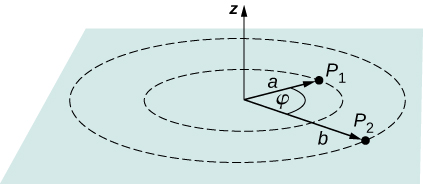| << Chapter < Page | Chapter >> Page > |

For the second step, becomes , but and therefore Adding the two parts together, we get 300 V.
Check Your Understanding From the examples, how does the energy of a lightning strike vary with the height of the clouds from the ground? Consider the cloud-ground system to be two parallel plates.
Given a fixed maximum electric field strength, the potential at which a strike occurs increases with increasing height above the ground. Hence, each electron will carry more energy. Determining if there is an effect on the total number of electrons lies in the future.
Before presenting problems involving electrostatics, we suggest a problem-solving strategy to follow for this topic.

Notification Switch
Would you like to follow the 'University physics volume 2' conversation and receive update notifications?